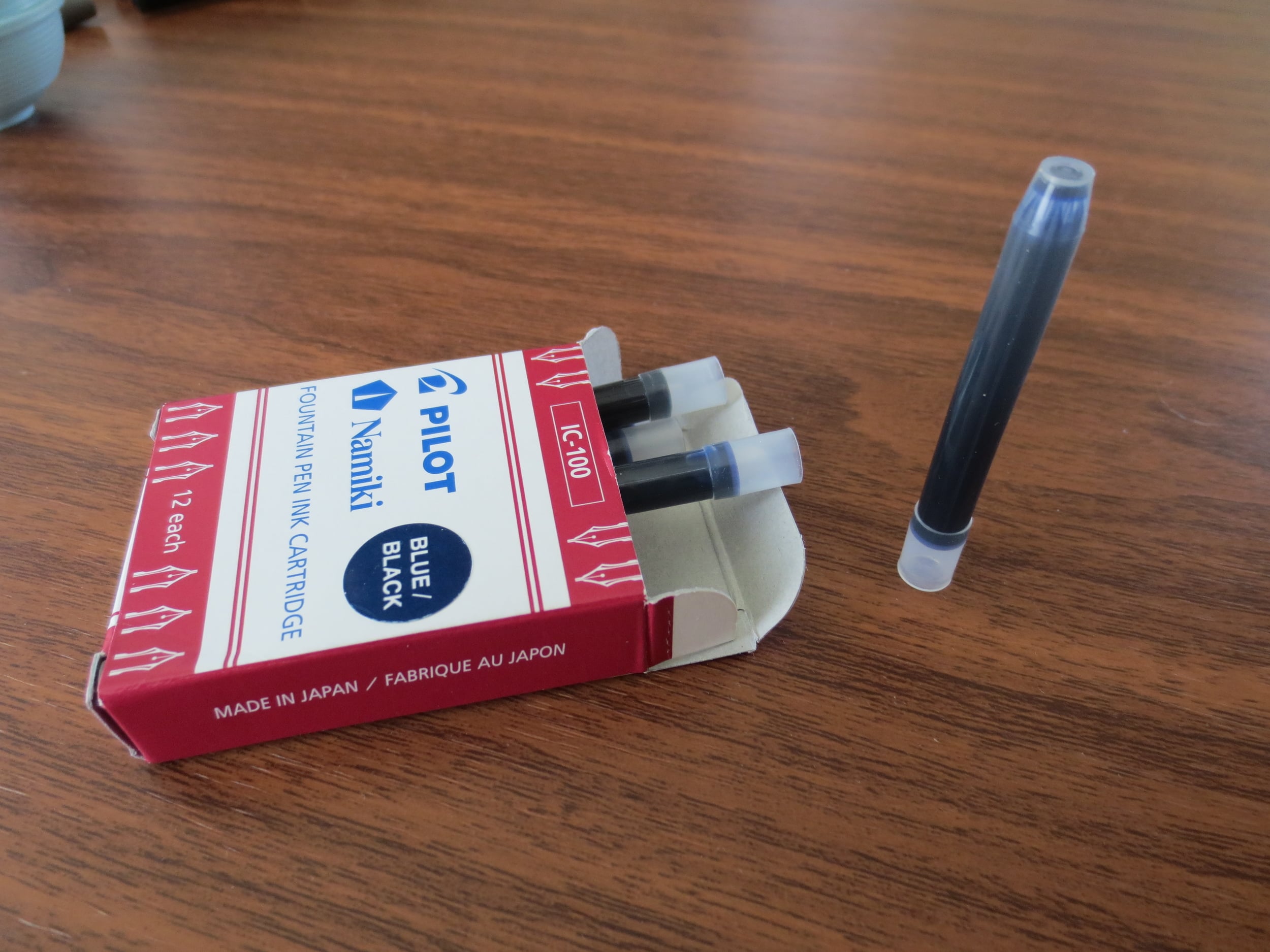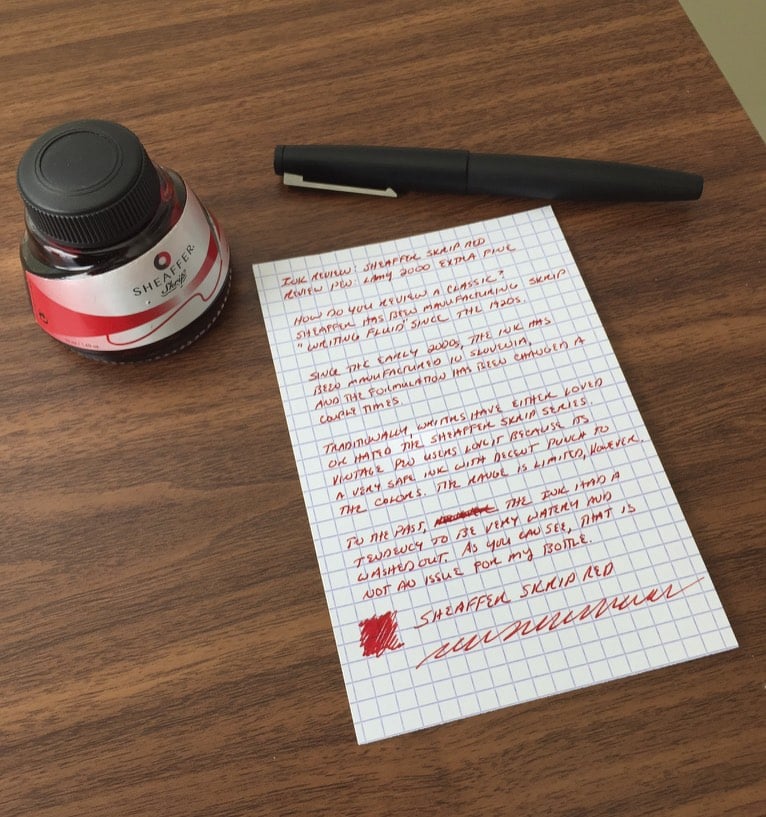What do people consider to be "great brands", and what makes them feel that way? Over the past few weeks I had a couple posts on which I received a lot of feedback. The first was my post on my "Top Three Favorite Pen Brands," and the second was a post on Sailor Ink, which has long been my preferred brand of fountain pen ink. The interesting part for me was hearing back from all of you readers on your own favorite brands. Here's a few that kept coming up:
- Pilot and Sailor. No surprise here. A lot of people love these two Japanese companies for both their pens and their inks. I slightly prefer Sailor inks over Pilot inks, because I think they perform slightly better on cheap "office stock" paper, but as you know from my previous posts, I think highly of both Sailor and Pilot pens.
- TWSBI. I received a couple e-mails and comments asking for my thoughts on TWSBI, which makes excellent pens at the sub-$75 price point. TWSBI doesn't design their pens specifically for fountain pen "newbies", but they are approachable provided that you don't mind filling from an ink bottle. Since they've tamed their quality control problems, I've kept a couple TWSBI's in my collection, and generally have one inked up and in the rotation. TWSBI makes excellent workhorse daily carries, and since their pens are demonstrators, I like to use them for testing inks. The nibs on the TWSBI 580 are interchangeable, and I have several spare nibs that have been ground into various configurations (i.e., a cursive italic and and architect's grind) that I can swap in and out of the pen.
- Platinum. This Japanese brand, often thought of as the "third" Japanese brand behind Pilot and Sailor, as well as the sister company of Nakaya, is gaining popularity here in the U.S. I recently acquired my first two Platinum pens, 3776 Century demonstrators in Bourgogne and Chartres Blue, and despite some annoying nib issues on the Chartres, which took some time to resolve, I'm enjoying both of them. Platinum definitely has the potential to break into my "Top Three" in the future, but I need some more time with the pens. And I still have my eye on their celluloid and Izumo lines...
- Diamine. A British ink company, based in Liverpool, that's beloved for their extremely broad range of colors. Diamine's ink line, however, is so broad that I find it hard to categorize due to the wide assortment of different dyes used, etc. In my experience, some inks behave differently than others, and I've had their reds and oranges tend to crust up on the nib. I've had an excellent experience with Diamine's 150th Anniversary Inks (especially the Terracotta), but I've yet to test the waters with their "Shimmer-tastic" glitter inks.
- Waterman. This brand holds a special place for me (and others, I might imagine) because for a long time, these inks were one of the only brands of fountain pen ink widely available in the U.S. For example, it wasn't too long ago that you could occasionally find bottles of Waterman (and sometimes Phileas fountain pens) at university bookstores or big-box office supply stores. I've always believed that Waterman makes good pens, too. (My first "nice" fountain pen was a Waterman Laureate.)
There are many more out there that people use and love. This list got me thinking on what these various brands have in common, and why certain brands become favorites. I settled on three major factors that play into it, at least for me:
Pilot's Kakuno fountain pen: Reliability (excellent QC), Variety (lots of color combinations), and Affordability ($10!!!) all in one package.
Reliability. Number one for me. You could also call this "consistency." No matter what specific item I pick up from one of my favorite brands, I know that it's going to write well, without serious problems. Reliability and consistency largely determined who made it onto my Top 3 list. A lot of people were surprised that I included Delta on that list, but Matt Armstrong (Pen Habit) echoed my sentiments in a recent review: every Delta nib he's used has written exceptionally well out of the box. Reliability and consistency issues have kept other pens that I otherwise like out of my "top" lists. For example, my experience with the Platinum UEF nib docked them a bit in my book, and TWSBI has a ways to go before I truly believe that they've overcome the cracking problem that plagued them early on.
Variety. This is a tricky balancing act: You want your favorite brands to offer enough of a range that you don't get bored, yet at the same time you don't want to see them issuing new models left and right chasing trends indiscriminately.
Sailor issues variations on its Pro Gear line of pens, with the Imperial Black Edition being a favorite.
Who does this well? Sailor is a big winner here, and it's a major reason why I like them so much. They refresh their ink line every few years, and make special runs of ink for specific retailers. They also issue different color schemes and designs without departing from their classic pen models, such as the Pro Gear. Pilot, Platinum, and Pelikan also do a nice job balancing their traditional lines with tasteful special and limited editions. Diamine has shown that it can manage a massive line of different inks without any consistency or serious Q.C. problems.
Who Needs Work? Brands like Monteverde, which frankly makes a lot of weird pens. Even Delta can be borderline tacky, with a lot of over-the-top limited editions, but the quality of their nibs saves them (at least in my book). Ink brands like Noodler's and Private Reserve have wild variations in performance (sometimes even across different batches of the same colors), and you never really know what you are going to get with a specific ink. On the other hand, Waterman suffers from the opposite problem: their line seems stale. They haven't introduced any interesting new pens or inks in the past few years, and their product line largely looks like it did in the late 90s (or even the 80s).
Price Point/Accessibility. Again, the Japanese companies end up on a lot of people's lists of favorites because their product lines run the gamut of price points from $12 entry-level pens to pens in the $1000s, without sacrificing quality. Delta does a decent job on this as well, though they haven't yet introduced any pens designed to compete with the Pilot Metropolitan or Kakuno. Lamy's Safari has been at the top of many "best first fountain pen lists" for decades. On the other hand, companies such as Pelikan have struggled to broaden their appeal. They've had a lot of success with their higher-end pens, but still can't figure out how to make a true entry level pen that isn't overpriced or doesn't look childlike. Waterman discontinued their excellent Phileas, which was a great entry-level pen available at office-supply stores, and now their pens start around $100.
Perhaps the big winner in the non-fountain pen world is Retro 51, which has been wildly successful with their Tornado line of rollerballs. With a few exceptions, their various editions (both standard and limited) are consistently priced in the $30-50 range, and their quality control is exceptional.
Of course, lots of different factors go into the business strategies pursued by these different companies. I'm no economist, so admittedly my thoughts here are entirely subjective and based on what I, personally, value in a brand, as well as discussions with other pen nerds about what we like about certain companies. Hope you enjoy!
DISCLAIMER: This post contains affiliate links, through which I may be compensated a small amount if you purchase an item from any of the sites linked to in this article. While I'd greatly appreciate it if you use these links to purchase something you are interested in, you are, of course, under no obligation to do so. Many thanks!



